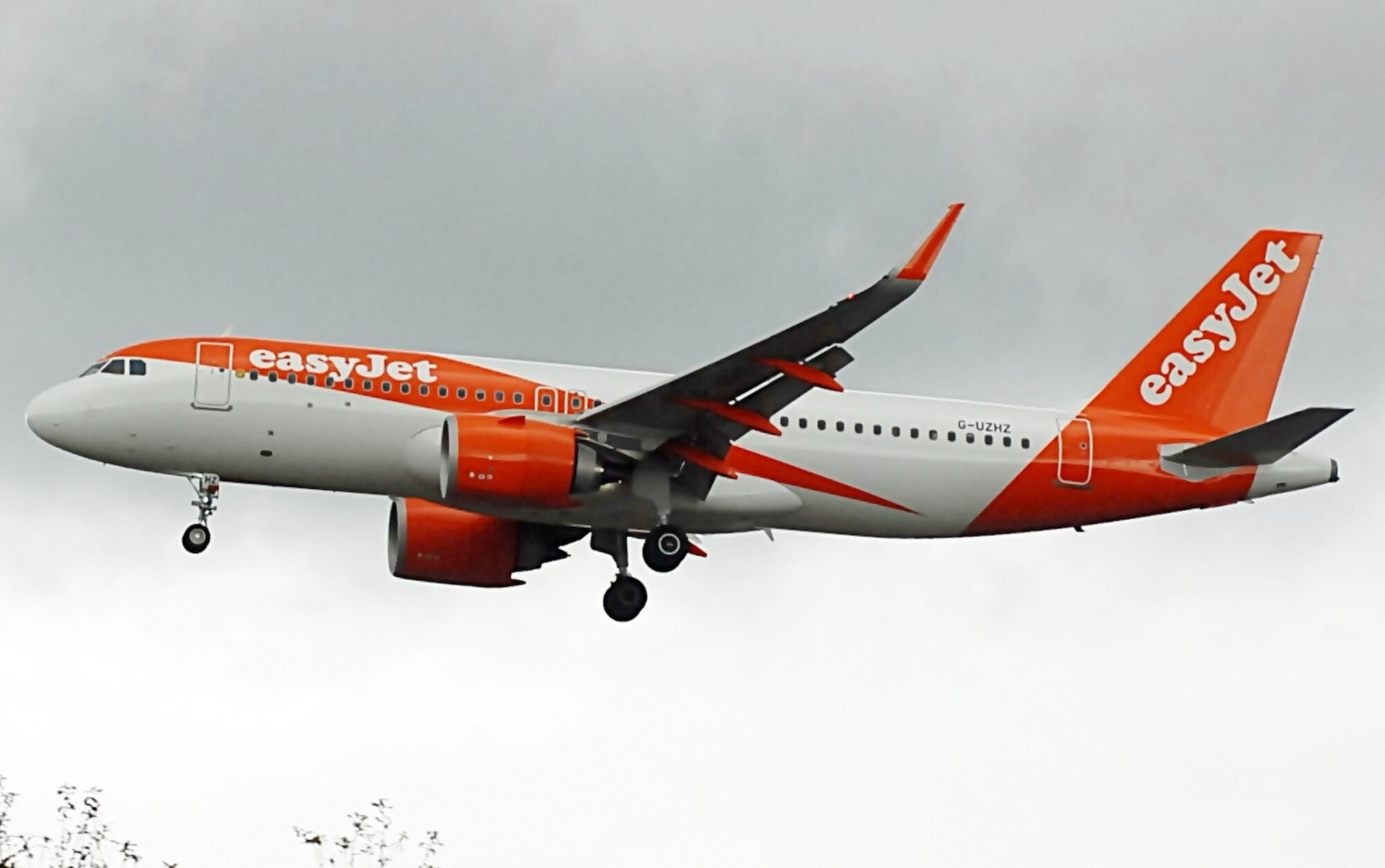Flight U2-2251 | Registration: G-UZHA
Date: 2 February 2025 | Location: Near Hurghada International Airport (HEGN), Egypt
Introduction
On 2 February 2025, an EasyJet Airbus A320-251N, registration G-UZHA, operating scheduled passenger service U2-2251 from Manchester Airport (EGCC), United Kingdom, to Hurghada International Airport (HEGN), Egypt, received an Enhanced Ground Proximity Warning System (EGPWS) alert during the final approach phase. The warning occurred during a standard visual approach to runway 34L while descending through 2,900 feet on downwind.
Following the alert, the crew conducted a terrain avoidance manoeuvre, climbing to 4,000 feet before re-establishing for a second approach. The aircraft landed safely on runway 34L approximately seven minutes after the event. There were no injuries or damage reported.
Egypt’s Aircraft Accident Investigation Department (AAID) has classified the occurrence as a serious incident, citing it as a “Near CFIT (Controlled Flight Into Terrain) event involving an EGPWS terrain closure warning.” The incident is currently under formal investigation.
Flight Details
• Aircraft Type: Airbus A320-251N (neo)
• Engines: 2 × CFM LEAP-1A26
• Operator: EasyJet UK
• Tail Number: G-UZHA
• Flight Number: U2-2251
• Departure Airport: Manchester Airport (EGCC), UK
• Destination Airport: Hurghada International Airport (HEGN), Egypt
• Date of Incident: 2 February 2025
• Occupants: Estimated 180 (including passengers and crew)
• Phase of Flight: Final approach (downwind leg)
• Altitude at EGPWS Alert: 2,900 feet MSL
• Weather Conditions: CAVOK; QNH 1020 hPa
• Visibility: Unlimited
• Runway in Use: 34L
• Time of Occurrence: Approx. 20:00 local (18:00Z)
Sequence of Events
Approach Phase
As the aircraft entered the downwind leg for runway 34L at Hurghada, it was descending through approximately 2,900 feet. Weather conditions were clear with no significant meteorological factors reported. The crew was conducting a visual or managed approach based on local ATC instructions.
Terrain Warning Triggered
During the descent, the EGPWS system issued a “TERRAIN AHEAD – PULL UP” warning. Such alerts indicate a potential Controlled Flight Into Terrain (CFIT) event where the aircraft’s current trajectory intersects with known terrain elevation or obstacle data.
The flight crew responded immediately and in accordance with Airbus and EasyJet SOPs. The autopilot was disconnected, and the crew initiated a terrain avoidance manoeuvre, climbing to 4,000 feet while executing a left-hand base turn to re-establish the approach.
Safe Landing
After confirming terrain clearance and resolving the EGPWS warning, the aircraft was vectored back onto the final approach course. A safe landing was conducted on runway 34L approximately seven minutes after the incident. Emergency services were not required, and the aircraft taxied to stand normally.
Immediate Reporting and Investigation
• The captain self-reported the occurrence to the airline and local ATC upon arrival.
• EasyJet formally notified the relevant authorities, including the UK CAA and Egypt’s AAID.
• On 29 March 2025, the AAID publicly confirmed the event and classified it as a serious incident under international ICAO Annex 13 standards.
• The AAID stated the event was characterised by a “Near CFIT on approach (EGPWS closure)” and that a full investigation is underway.
Technical & Operational Analysis
EGPWS System
The Enhanced Ground Proximity Warning System (EGPWS) provides predictive terrain and obstacle warnings by cross-referencing GPS position, aircraft configuration, and an internal terrain database. In standard approach profiles, EGPWS may trigger warnings if the descent path approaches terrain elevation margins below defined safety thresholds.
Potential Contributing Factors
The investigation will consider:
• Descent Profile: Whether the aircraft was below the stabilised approach path or deviating from the standard vertical profile.
• Automation & Altitude Setting: Mismanaged flight control unit (FCU) selections or incorrect barometric settings.
• Database Accuracy: The potential for outdated terrain mapping or incorrect aircraft GPS positioning.
• ATC Procedures & Local Terrain Awareness: Possible procedural issues or environmental influences such as rising terrain near the approach corridor.
Environmental Conditions
METAR data for the time of the event indicated CAVOK (Ceiling And Visibility OK), no clouds below 5,000 feet, excellent visibility, and light surface winds – effectively ruling out poor weather as a contributing factor.
Post-Flight Status & Safety Actions
• Aircraft Status: No damage was reported. The aircraft continued normal operations after routine checks.
• Flight Crew Actions: The immediate response was timely and in accordance with terrain avoidance protocols.
• Airline Response: EasyJet is fully cooperating with the Egyptian AAID and is reviewing internal procedures for approaches into terrain-sensitive airports.
• Data Retrieval: CVR and FDR downloads are expected to provide detailed insight into autopilot engagement, flight path, crew inputs, and EGPWS triggers.
Summary & Safety Outlook
This serious incident involving an EGPWS alert highlights the critical importance of terrain awareness during visual or semi-managed approaches into terrain-rich environments like Hurghada. While no injuries or damage occurred, the proximity of the aircraft’s flight path to terrain sufficient to trigger a warning underscores the need for continued training, operational discipline, and monitoring of aircraft trajectory in relation to approach procedures.
The incident remains under active investigation by Egypt’s AAID with participation from the UK AAIB and Airbus as technical advisers.
Disclaimer
This report is based on publicly available data and official statements as of 29 March 2025. Information may be subject to change pending the outcome of the ongoing investigation. If you are the rightful owner of any referenced content and wish it to be removed, please contact takedown@cockpitking.com.
